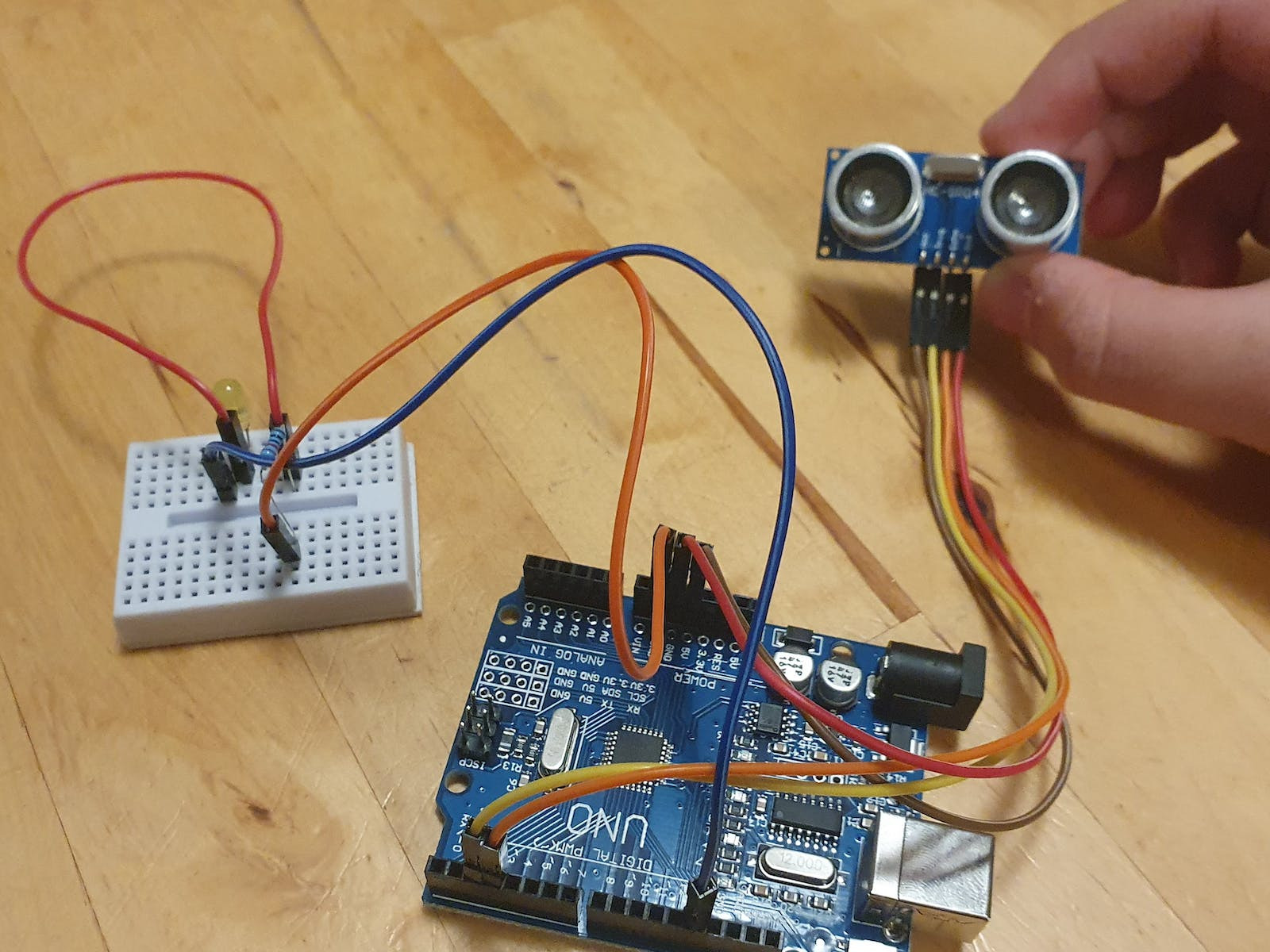
In the wake of the COVID-19 pandemic, social distancing has become a crucial measure to curb the spread of the virus. Public spaces, such as bars and restaurants, have been particularly affected by these restrictions, necessitating innovative solutions to maintain safe social interactions. This guide delves into the design and implementation of an Arduino-based social distancing bar project, providing a step-by-step approach to creating a system that monitors and enforces social distancing guidelines within a bar setting.
Understanding the Social Distancing Bar Project

The Arduino Social Distancing Bar Project aims to utilize the power of Arduino technology to create a system that ensures patrons maintain appropriate physical distance from one another. This system comprises ultrasonic sensors, LEDs, and an Arduino microcontroller to detect and signal potential violations of social distancing norms.
Essential Components for the Social Distancing Bar Project
To construct this project, you will need the following components:
- Arduino Uno microcontroller board
- Ultrasonic sensors (HC-SR04 or equivalent)
- LEDs (red and green)
- Jumper wires
- Breadboard
- USB cable for connecting the Arduino to a computer
- 3V power supply (battery or external power source)
- Step-by-Step Project Implementation
Hardware Setup:

- Connect the Arduino Uno to the breadboard using jumper wires.
- Connect the ultrasonic sensors to the Arduino:
- Connect the trigger pin of the ultrasonic sensor to pin 12 of the Arduino.
- Connect the echo pin of the ultrasonic sensor to pin 13 of the Arduino.
- Connect the LEDs to the Arduino:
- Connect the anode of the red LED to pin 9 of the Arduino.
- Connect the cathode of the red LED to ground on the breadboard.
- Connect the anode of the green LED to pin 10 of the Arduino.
- Connect the cathode of the green LED to ground on the breadboard.
Arduino Programming
- Open the Arduino IDE software on your computer.
- Create a new Arduino sketch.
- Include the necessary libraries for ultrasonic sensors and LEDs:
- Include the NewPing library for ultrasonic sensors.
- Include the FastLED library for controlling LEDs.
- Define the pins for the ultrasonic sensors and LEDs.
- Set up the serial communication for debugging purposes.
- Initialize the ultrasonic sensors and LEDs.
- Write the main loop function that continuously measures the distance between patrons using the ultrasonic sensors:
- Trigger the ultrasonic sensor to send a sound wave.
- Measure the time it takes for the sound wave to return.
- Calculate the distance based on the time measurement.
- Check if the measured distance is less than the minimum acceptable social distance (e.g., 6 feet).
- If the distance is too close, turn on the red LED to indicate a violation.
- If the distance is within the acceptable range, turn on the green LED to indicate compliance.
Testing and Deployment

- Connect the Arduino to your computer using a USB cable.
- Upload the Arduino sketch to the Arduino board.
- Test the system by placing objects at different distances from the ultrasonic sensor and observing the corresponding LED indications.
- Once testing is complete, deploy the system in the bar environment by mounting the ultrasonic sensors and LEDs strategically to cover the desired area.
Conclusion
The Arduino Social Distancing Bar Project provides a practical and effective solution to maintaining social distancing guidelines within bars and similar public spaces. By utilizing ultrasonic sensors, LEDs, and an Arduino microcontroller, the system effectively monitors and signals potential violations, ensuring patrons adhere to recommended safety measures. This project demonstrates the versatility of Arduino technology in addressing real-world challenges and promoting responsible behavior in social settings.
Read More
- 3D Atom Model Project Ideas
- IoT Based Manhole Lid Detection With Surveillance Camera
- Raspberry Pi Face Mask Detection & Temperature COVID-19 Project
- How to Design Arduino Face And Face Mask Recognition Project
FAQs
What is the minimum acceptable social distance for the system?
The minimum acceptable social distance can be adjusted in the Arduino sketch to match the current guidelines or specific requirements of the bar environment.
Can the system be integrated with other bar management systems?
Yes, the system can be integrated with other bar management systems to provide real-time data on social distancing compliance, enabling proactive measures to maintain safety.
What is the power consumption of the system?
The power consumption of the system is relatively low, primarily due to the efficient operation of the Arduino microcontroller and the low power consumption of the ultrasonic sensors and LEDs.
What are the limitations of the system?
Environmental factors such as noise and interference can potentially affect the system’s performance. To mitigate these limitations, consider the following strategies:
- Noise Reduction: Choose ultrasonic sensors with higher immunity to noise interference.
- Strategic Sensor Placement: Mount the sensors in locations less prone to environmental noise, such as away from speakers or air conditioning vents.
- Data Filtering: Implement data filtering techniques in the Arduino sketch to remove noise and outliers from the sensor readings.
- Calibration: Regularly calibrate the ultrasonic sensors to ensure accurate distance measurements.
Additional Enhancements and Future Directions
The Arduino Social Distancing Bar Project can be further enhanced and expanded in various ways:
- Wireless Communication: Incorporate wireless communication modules (e.g., Wi-Fi or Bluetooth) to enable remote monitoring and control of the system.
- Data Visualization: Develop a web-based dashboard or mobile app to visualize real-time social distancing data and provide insights into patron behavior.
- Integration with Bar Signage: Integrate the system with bar signage to display social distancing reminders or warnings when violations occur.
- Adaptive Social Distancing: Implement algorithms to dynamically adjust the minimum acceptable social distance based on real-time occupancy and crowd density.
- Contact Tracing Capabilities: Explore integrating contact tracing capabilities to identify potential exposure risks if a patron is later found to be infected.

